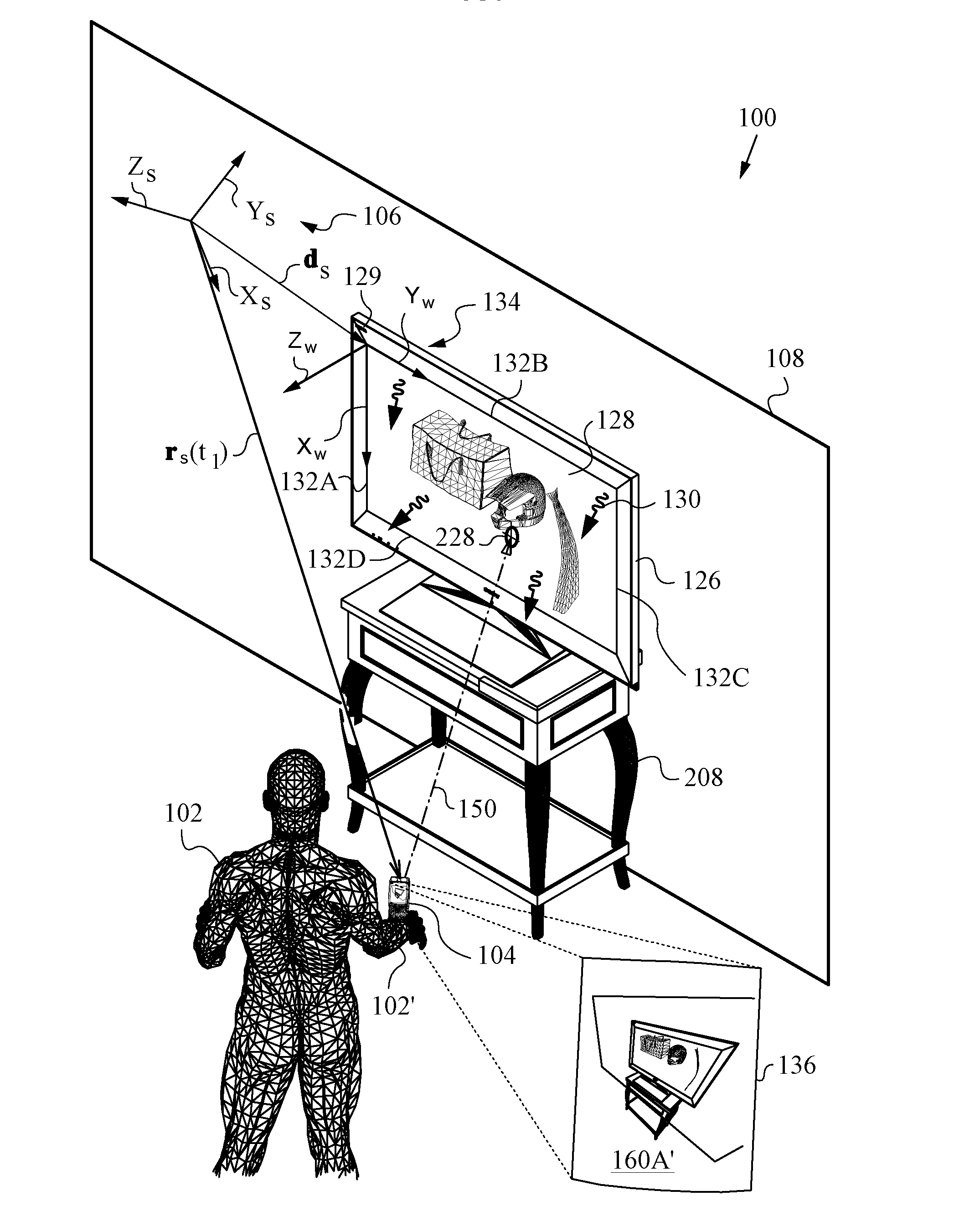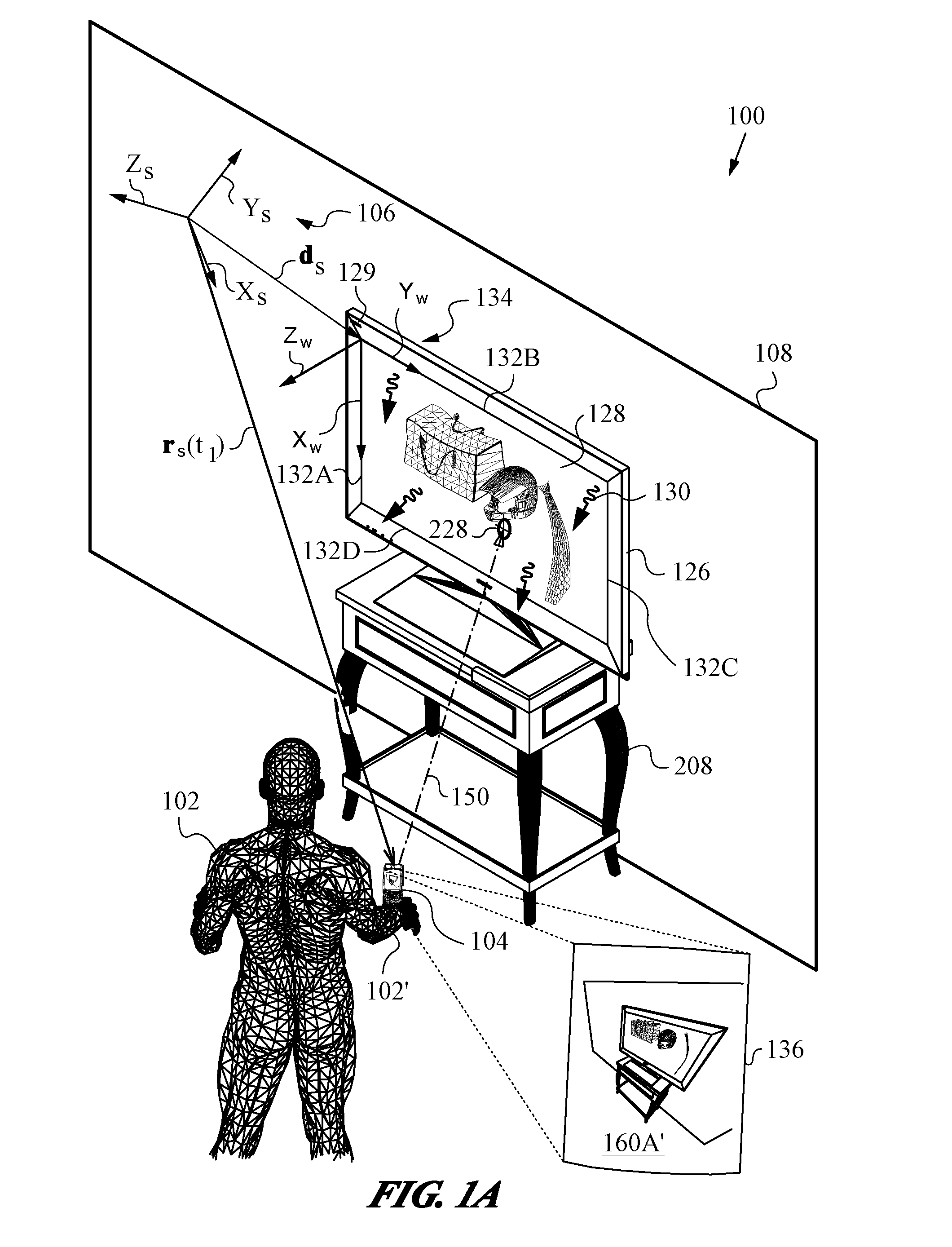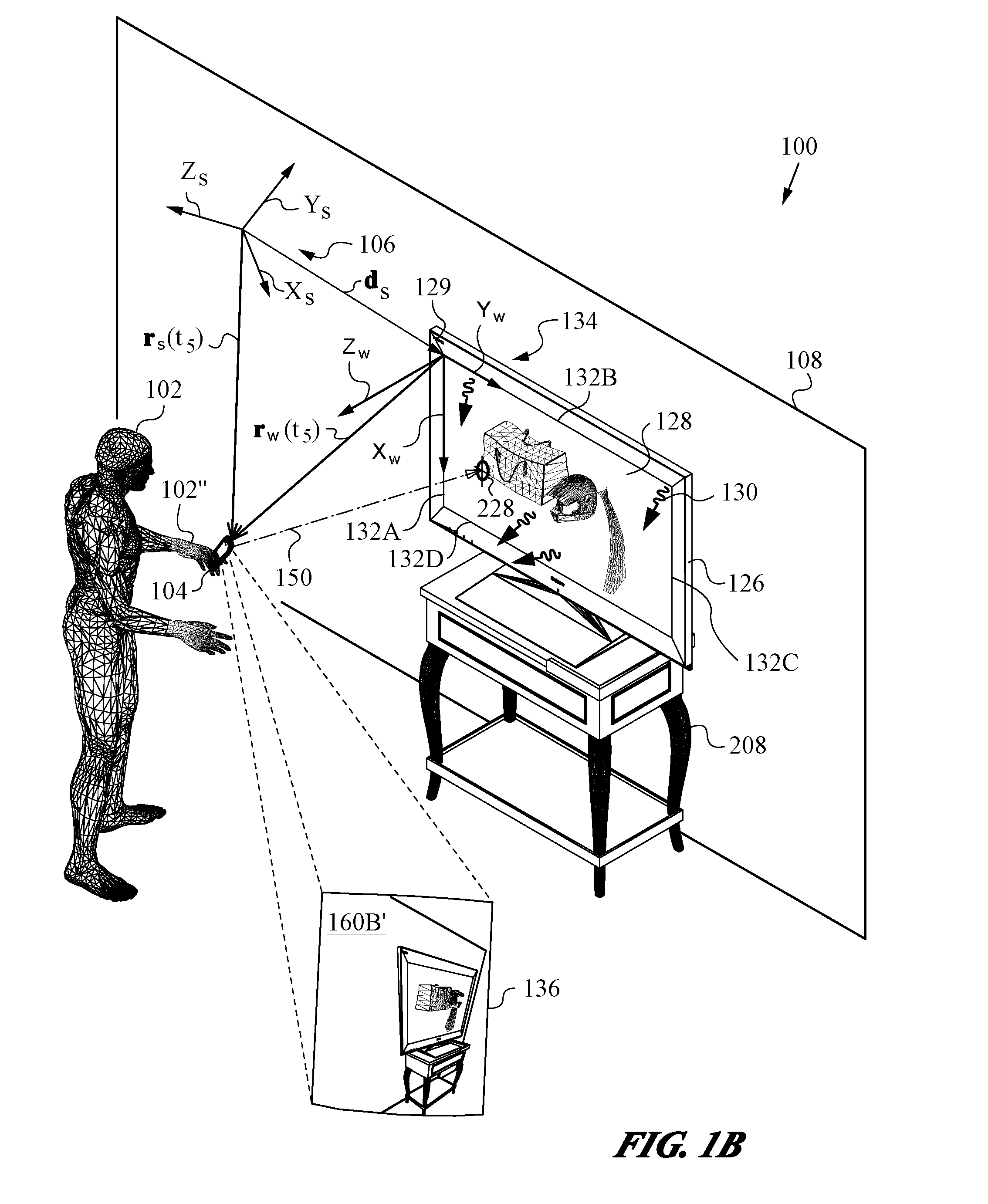Unconstrained motion of items in many three-dimensional environments, however, may not lend itself to a simple description in terms of
equations of motion.
Most of the prior art approaches listed above are limited in that they yield relative position of the tip on the writing surface.
Tablets and digitizers obtain absolute position but they are bulky and inconvenient.
This approach is limiting in that it requires a specially-marked writing surface, which acts as a quasi-tablet.
In addition to being cumbersome, state-of-the-art pens and styluses employing optical systems usually generate a limited
data set.
A major problem encountered by state-of-the-art manipulated items such as wands and gaming implements is that they do not possess a sufficiently robust and rapid absolute pose
recovery system.
In fact, many do not even provide for absolute pose determination.
Unfortunately, motion mapping between space and cyberspace is not possible without the ability to digitize the absolute pose of the item in a well-defined and stable
reference frame.
All prior art approaches that do not solve the full motion problem, i.e., all devices and methods that do not capture successive absolute poses of the item with a method that accounts for all
six degrees of freedom (namely, three translational and the three
rotational degrees of freedom inherently available to rigid bodies in three-dimensional space) encounter limitations.
Among many others, these limitations include
information loss, appearance of an offset, position
aliasing, gradual drift and accumulating position and orientation error.
This approach to
motion capture tends to be computationally expensive because of significant image pre- and post-
processing requirements, as well as additional computation associated with segmentation and implementation of algorithms.
The above approaches using markers on objects and cameras in the environment to recover object position, orientation or trajectory are still too resource-intensive for low-cost and low-bandwidth interfaces and applications.
This is due to the large bandwidth needed to transmit image data captured by cameras, the computational cost to the host computer associated with
processing image data, and the data
network complexity due to the spatially complicated distribution of equipment (i.e., placement and coordination of several cameras in the environment with the
central processing unit and overall
system synchronization).
Unfortunately, approaches in which multiple cameras are set up at different locations in the three-dimensional environment to enable stereo vision defy low-cost implementation.
These solutions also require extensive calibration and synchronization of the cameras.
Meanwhile, the use of expensive single cameras with depth sensing does not provide for robust systems.
The resolution of such systems tends to be lower than desired, especially when the user is executing rapid and intricate movements with the item in a confined or close-range environment.
Unfortunately, the complexity of additional hardware for projecting images with characteristic image points is nontrivial.
The same is true of consequent calibration and interaction problems, including knowledge of the
exact location of the image in three-dimensional space.
This problem translates directly to the difficulty of establishing stable frames in the three-dimensional environment and parameterizing them.
Furthermore, the solution is not applicable to close-range and / or confined environments, and especially environments with typical obstructions that interfere with line-of-
sight conditions.
In fact, it may be in a large part due to the fact that some of the more basic challenges are still being investigated, that the questions about how to use the recovered poses are still unanswered.
In particular, the prior art does not address the mapping between absolute poses recovered in a stable
reference frame and the digital world to obtain a meaningful interface and user experience.
 Login to View More
Login to View More  Login to View More
Login to View More 


